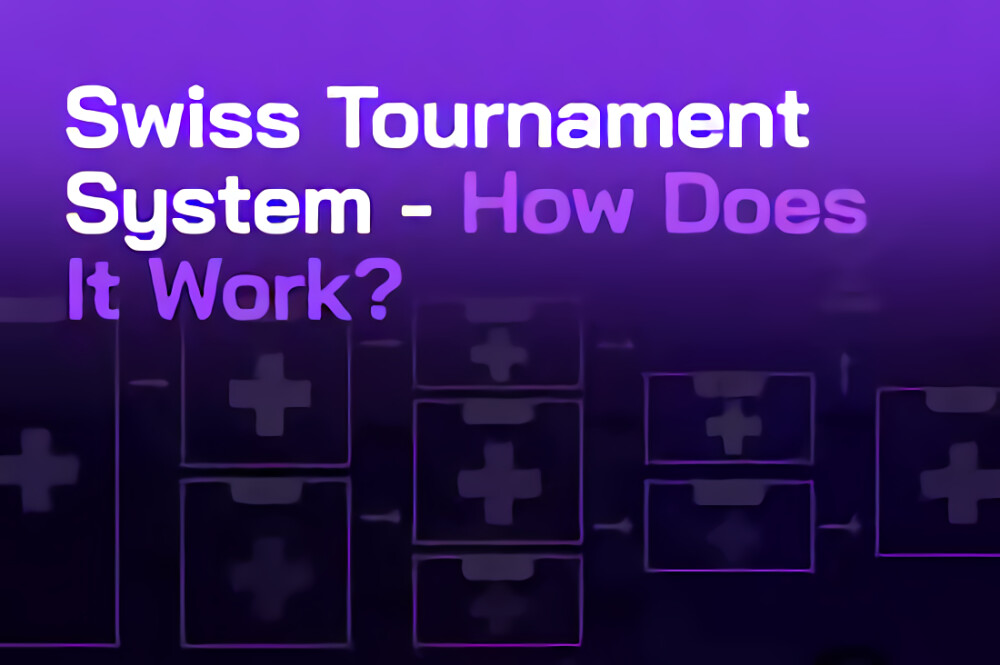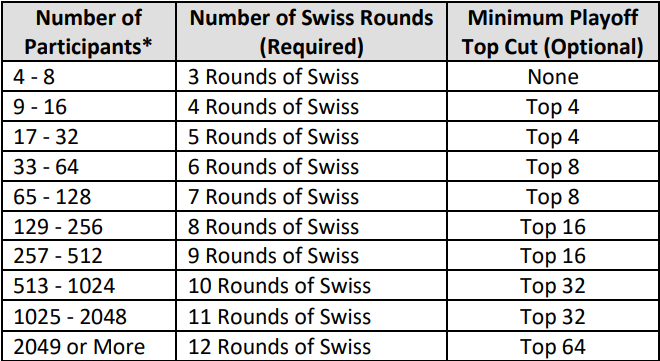
When it comes to determining the best of the best in Yu-Gi-Oh! tournaments, the Swiss system stands out for its unique balance of fairness and competition. It provides a robust platform that ensures every duel counts, and every player’s potential is measured accurately. However, it also houses a complexity that can leave some players puzzled.
In this article, we delve into the Swiss system’s intricacies, walking you through an example of a 9-player Yu-Gi-Oh! tournament to elucidate how it functions.
The Swiss Algorithm Cardinal Rules:
-
Matching Players: In a Swiss system tournament, players are matched as closely as possible according to their scores. This ensures a level playing field where players of similar abilities are pitted against each other. This is unlike Round Robin in which every player is matched with every other player but the problem with that is the number of games becomes exponentially big! Swiss is the smarter solution of pairing winners vs winners and losers vs losers.
-
No Rematches: The system avoids rematches wherever possible. A player will not duel the same opponent again unless they’ve already faced every other player in the tournament. This rule guarantees a diversity of matchups and prevents exploitation of the system.
-
Bye Distribution: A “bye” – an automatic win typically given when there’s an odd number of players – cannot be awarded to the same player twice before all other players have had a chance to receive a bye. This rule maintains the fairness of the tournament structure.
Number of Rounds

Source: https://img.yugioh-card.com/ygo_cms/ygo/all/uploads/KDE-E_TCG_Tournament_Policy_2_1.pdf
Round 1:
- Player 1 vs Player 2 - Player 1 wins (Score: 1-0)
- Player 3 vs Player 4 - Player 3 wins (Score: 1-0)
- Player 5 vs Player 6 - Player 5 wins (Score: 1-0)
- Player 7 vs Player 8 - Player 7 wins (Score: 1-0)
- Player 9 receives a bye (Score: 1-0)
After Round 1, scores for players 2, 4, 6, and 8 are 0-1.
Round 2:
- Player 1 (1-0) vs Player 3 (1-0) - Player 1 wins (Score: 2-0)
- Player 5 (1-0) vs Player 7 (1-0) - Player 7 wins (Score: 2-0)
- Player 9 (1-0) vs Player 2 (0-1) - Player 9 wins (Score: 2-0)
- Player 4 (0-1) vs Player 6 (0-1) - Player 6 wins (Score: 1-1)
- Player 8 (0-1) receives a bye (Score: 1-1)
After Round 2, scores for players 2, 3, 4, and 5 are 0-2, and scores for players 6 and 8 are 1-1.
Note how the pairings were done for Round 2. Winners were paired with winners; losers paired with losers. However, there were 5 winners, so one of those winners had to be paired with a loser. The bye was given to a player randomly among the losers.
Round 3:
- Player 1 (2-0) vs Player 7 (2-0) - Player 1 wins (Score: 3-0)
- Player 9 (2-0) vs Player 8 (1-1) - Player 9 wins (Score: 3-0)
- Player 5 (1-1) vs Player 2 (0-2) - Player 2 wins (Score: 1-2)
- Player 6 (1-1) vs Player 3 (1-1) - Player 6 wins (Score: 2-1)
- Player 4 (0-2) receives a bye (Score: 1-2)
Note here again that Player 9, one of the 2-0 players had to be paired with a 1-1 player. So far, no player has rematched with the same player.
Round 4:
- Player 1 (3-0) vs Player 9 (3-0) - Player 1 wins (Final Score: 4-0)
- Player 7 (2-1) vs Player 6 (2-1) - Player 6 wins (Final Score: 3-1)
- Player 2 (1-2) vs Player 3 (1-2) - Player 2 wins (Final Score: 2-2)
- Player 4 (1-2) vs Player 8 (1-2) - Player 4 wins (Final Score: 2-2)
- Among the players with the lowest scores (Players 2, 3, 4, 5, and 8) Player 8 has already received a bye and is taken account when comparing previous match history. Players 2 and 5 previously were paired and 3 and 4 were previously paired. This means that any of them can be paired with Player 8, and tie breakers are used to decide which one ultimately receives the bye. For simplicity let’s say Player 5 (1-2) receives a bye (Final Score: 2-2).
In this scenario, the two undefeated players with 3-0 got paired in the final round. This is an ideal situation, but realistically, many players drop out before the final round. This means that there are fewer players left to pair with. Then, the algorithm has to recalculate to prevent rematches between the same players and this can result in the two undefeated players to NOT be paired with each other. When this happens, the tiebreakers have to be used to determine the winner among the two undefeated players. This just comes down to chance based on which player was paired with stronger opponents (higher match win %).
Now let’s suppose Players 3, 5, 2, and 6 are dropped out before Round 4 started. What would the pairings be?
- Player 1 (3-0) vs Player 8 (1-2)
- Player 9 (3-0) vs Player 7 (1-2)
This is the only possible pairing because Player 7 and 8; Player 1 and 7; and Player 9 and 8 were paired before. Thus, in this scenario, the top two players, Player 1 and 9 (3-0) cannot be paired even though they’ve never been paired before.
The Role of Byes:
In a tournament setting with an odd number of players, byes become an inevitable part of the process. The bye goes to a player with the lowest score. In the event of a tie for the lowest score or if the eligible player has already received a bye, a random draw among the eligible players determines who gets the bye.
Navigating the Final Round:
Even if two undefeated players haven’t been paired in the final round to prevent rematches among other players, this still aligns with the Swiss system’s principles. In such scenarios, the Cumulative Opponent’s Match Win percentage (COMW) comes into play. COMW is calculated based on the average of the opponent’s match win percentage and the opponents’ opponent’s match win percentage. This metric, not to be confused with the Buchholz system used by Challonge, ensures a fair tiebreaker within the Swiss system.
The Importance of Tiebreakers:
Tiebreakers, particularly in the form of COMW, play a vital role in the Swiss system. When multiple players have the same score, tiebreakers accurately determine the rankings and, crucially, the top cut.
The Optional Top Cut:
While the top cut is an optional part of the tournament structure as per Konami’s policy, it holds immense value. Players reaching the top cut have a second shot at glory – they can still win the tournament despite not being the best performer in the Swiss rounds. In Omega, the daily tournaments are without top cut to avoid long tournaments. For special events, the top cut is done on a separate day where we will host a Single Elimination tournament that is restricted only to the players who made it to the top cut.
In Conclusion:
The Swiss system, though seemingly complex, is a fair and robust mechanism for running Yu-Gi-Oh! tournaments. It encourages consistent performance, minimizes the impact of luck, and rewards the most skilled players. Understanding this system can enhance your tournament experience, making every duel an exciting step in your journey to becoming the next King of Games.
In YGO Omega, you may think that some pairings didn’t make sense with a very high scored player being paired with a low scored player. This happens however to prevent rematches between two players which is a cardinal rule of Swiss. This is also how Konami and Magic the Gathering conducts their tournaments. Under no circumstances can the cardinal rules be broken.